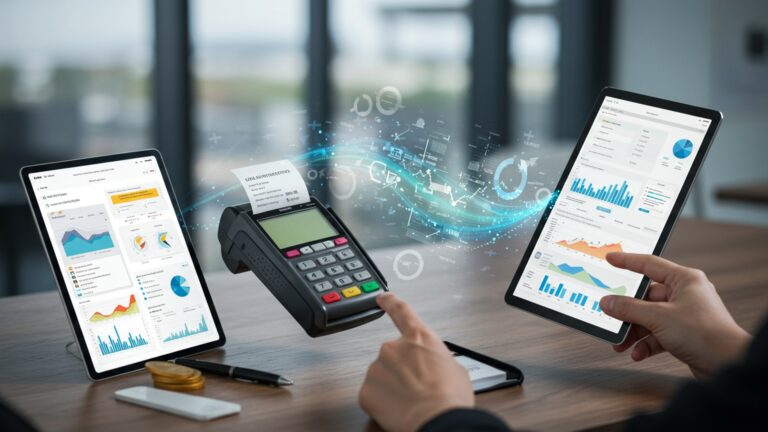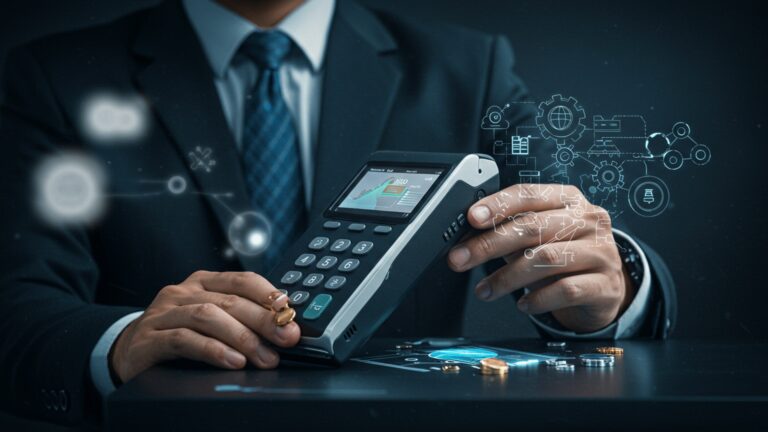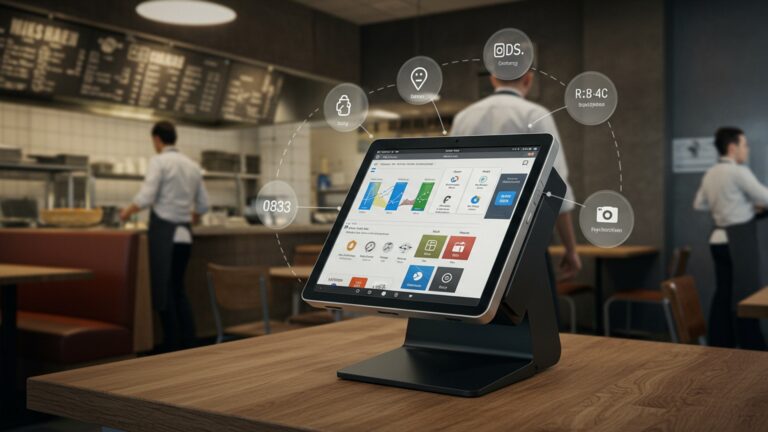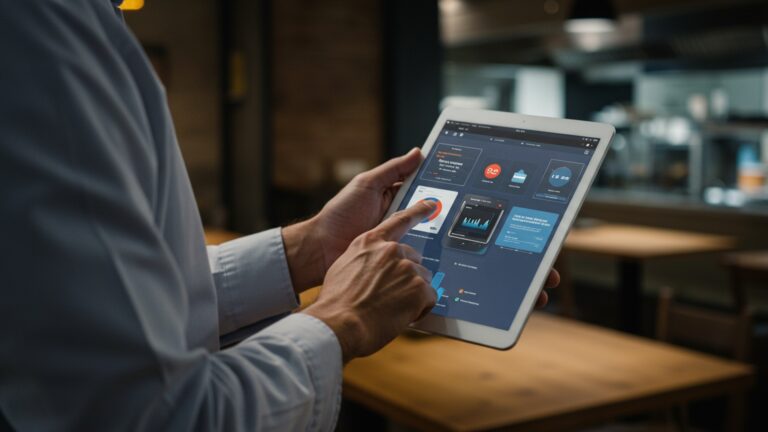Master Retail Operations How to Implement POS Software for Success
The modern retail landscape demands more than just efficient transactions; it requires a strategic command of real-time data and streamlined operations to thrive amidst evolving consumer expectations. Forward-thinking retailers recognize that implementing robust pos software for retail is no longer a luxury but a foundational necessity, transforming every touchpoint from inventory management to personalized customer interactions. Advanced systems, now integrating AI for predictive analytics and supporting diverse payment methods like tap-to-pay, empower businesses to minimize stockouts, prevent shrink. elevate the in-store experience. Mastering this deployment unlocks unparalleled operational efficiency and directly contributes to sustained profitability, ensuring your business isn’t just surviving. actively leading the market.
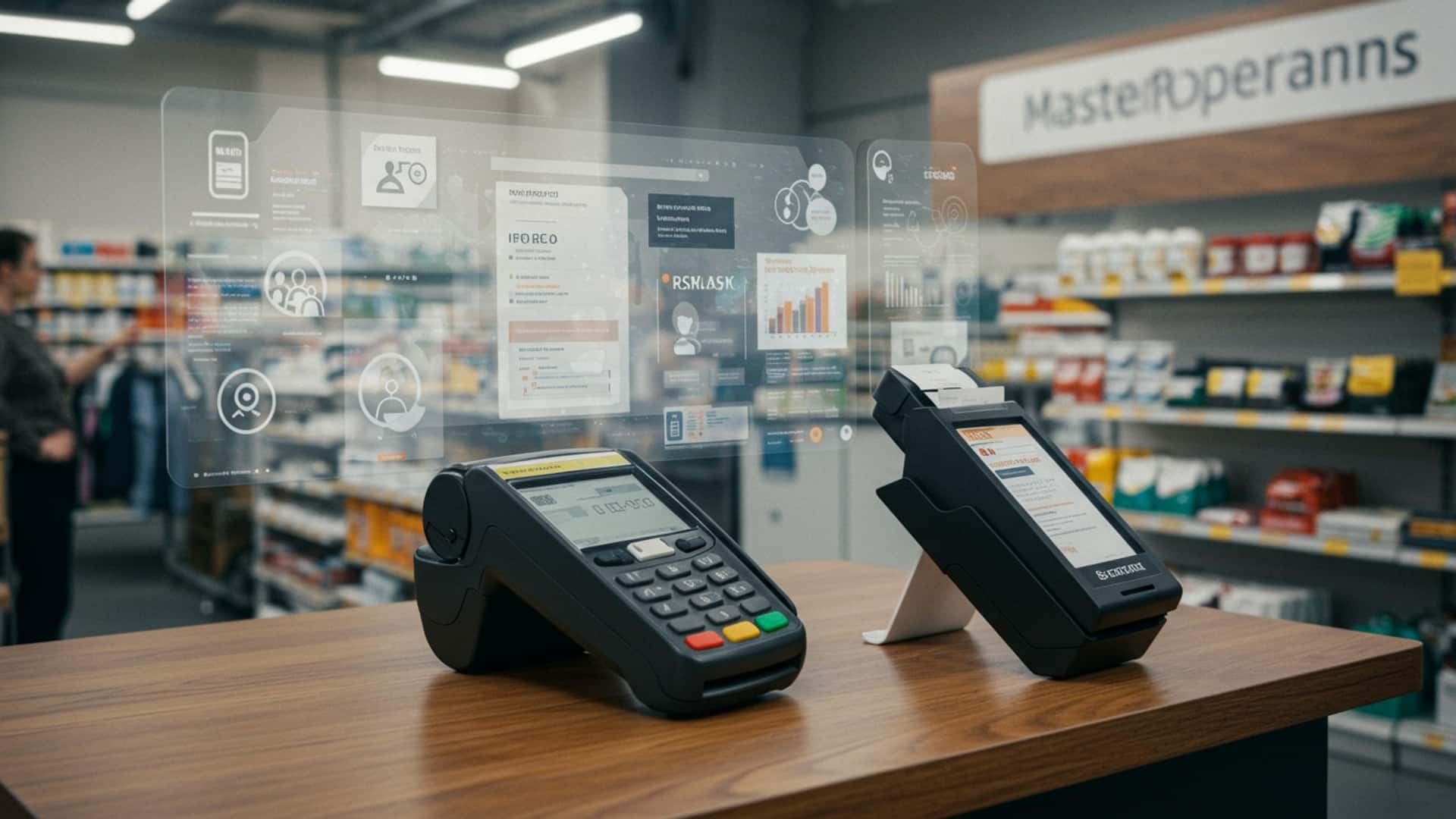
Understanding the Core: What is POS Software for Retail?
In the dynamic world of retail, efficiency and accuracy are paramount. At the heart of successful operations lies the Point of Sale (POS) system. Traditionally, a POS was simply a cash register where transactions were processed. Today, But, pos software for retail has evolved into a sophisticated, integrated system that manages far more than just sales. It’s a comprehensive platform that handles everything from inventory tracking and customer management to detailed sales analytics, becoming the central nervous system of any retail business.
Think of it as the brain of your store. Every time a customer makes a purchase, the POS system records that transaction, updates inventory levels, processes payments. even tracks customer preferences. This transformation from a basic till to an intelligent operational hub is what empowers modern retailers to thrive.
Beyond Transactions: Key Features of Modern POS Software
Modern pos software for retail goes far beyond simply ringing up sales. Its robust feature set offers a holistic approach to managing a retail business. Here are some of the critical functionalities you can expect:
- Inventory Management
- Customer Relationship Management (CRM)
- Sales Reporting and Analytics
- Employee Management
- Multi-channel Integration
- Payment Processing
- Returns and Exchanges
This core feature allows retailers to track stock levels in real-time, manage product variations (sizes, colors), set reorder points. even conduct stocktakes more efficiently. Accurate inventory prevents overstocking and understocking, saving costs and lost sales.
Integrated CRM capabilities enable businesses to capture customer data, track purchase history, manage loyalty programs. personalize marketing efforts. Understanding your customers is key to building lasting relationships.
This provides invaluable insights into sales trends, popular products, peak selling times. employee performance. Detailed reports help in making informed decisions about purchasing, staffing. promotions.
POS systems often include features for tracking employee hours, managing commissions. monitoring individual sales performance. This streamlines payroll processes and helps identify top performers.
For retailers operating both brick-and-mortar stores and e-commerce platforms, seamless integration is vital. A good pos software for retail can synchronize inventory and sales across all channels, providing a unified view of the business.
Securely accepting various payment methods, including credit/debit cards, mobile payments. contactless options, is a standard feature. Many systems also integrate with preferred payment processors for competitive rates.
Streamlining the process for returns, refunds. exchanges improves customer satisfaction and ensures accurate inventory adjustments.
The Unmistakable Benefits: Why Implement POS Software?
The strategic implementation of advanced pos software for retail can unlock significant advantages for businesses of all sizes. The benefits extend beyond mere convenience, impacting the bottom line and overall operational efficiency.
- Increased Efficiency and Speed
- Improved Inventory Accuracy
- Enhanced Customer Experience
- Better Business Insights
- Reduced Errors and Theft
- Scalability for Growth
Automated processes for sales, inventory updates. payment processing drastically reduce manual effort and transaction times. This means shorter queues and more productive staff.
Real-time tracking minimizes discrepancies, reduces shrinkage (loss due to theft, damage, or errors). ensures you always know what’s on your shelves. One retailer I consulted with reduced their annual inventory write-offs by 15% within six months of implementing a new POS system, simply by having better visibility.
Faster service, personalized offers through CRM data. streamlined returns contribute to happier customers who are more likely to return. Imagine a customer returning an item; with a good POS, their purchase history is instantly accessible, making the return process smooth and quick.
Robust reporting tools provide a clear picture of sales performance, product popularity. employee productivity. This data is crucial for strategic planning, identifying growth opportunities. mitigating risks.
Automation minimizes human error in pricing and calculations. Detailed transaction logs and inventory tracking also act as a deterrent against internal theft and help identify discrepancies quickly.
A well-chosen POS system can grow with your business, supporting new stores, additional product lines, or increased transaction volumes without needing a complete overhaul.
Choosing the Right Solution: Factors to Consider
Selecting the ideal pos software for retail is a critical decision that can significantly impact your business’s future. It’s not a one-size-fits-all solution. careful consideration of several factors is essential.
- Industry-Specific Needs
- Cloud-Based vs. On-Premise
A fashion boutique will have different requirements than a grocery store or a hardware shop. For example, fashion retail might need robust size/color matrix management, while a grocery store needs efficient barcode scanning and scale integration.
This is a major architectural decision.
| Feature | Cloud-Based POS | On-Premise POS |
|---|---|---|
| Hosting | Hosted by vendor on remote servers | Hosted on local servers within the business |
| Cost | Subscription-based (monthly/annually), lower upfront | Higher upfront cost (software license, hardware, IT infrastructure) |
| Accessibility | Access from anywhere with internet, on multiple devices | Access limited to local network, requires VPN for remote access |
| Maintenance | Managed by vendor (updates, security, backups) | Managed by internal IT staff or third-party (updates, security, backups) |
| Security | Vendor responsible for data security, often robust | Business responsible for all security measures |
| Scalability | Easily scalable with subscription upgrades | Requires hardware upgrades, potentially more complex to scale |
- Integration Capabilities
- Ease of Use and Training
- Support and Maintenance
- Cost
Can the POS seamlessly integrate with your existing accounting software, e-commerce platform, or loyalty programs? Avoid choosing a system that operates in a silo.
An intuitive interface reduces training time for staff and minimizes errors. A complex system, no matter how powerful, will lead to frustration and underutilization.
What kind of customer support does the vendor offer? Look for 24/7 support, comprehensive documentation. a clear service level agreement (SLA).
Consider not just the initial purchase price or subscription fee. also ongoing costs for hardware, maintenance, support. potential upgrades.
A Step-by-Step Guide to Successful Implementation
Implementing new pos software for retail can seem daunting. with a structured approach, it can be a smooth and rewarding process. Here’s a detailed roadmap:
Phase 1: Planning and Preparation
- Define Objectives
- Assess Current Systems
- Budgeting
- Team Selection
Clearly outline what you want to achieve with the new POS system. Is it faster checkout, better inventory control, or improved customer loyalty?
comprehend the limitations of your existing setup. What works, what doesn’t. what data needs to be migrated?
Allocate sufficient funds for the software, hardware, training. potential integration costs.
Designate a project manager and a core team to oversee the implementation, including representatives from sales, operations. IT.
Phase 2: Vendor Selection and Purchase
- Research and Demos
- Negotiation
- Contracting
Thoroughly research different POS providers. Request demos that are tailored to your specific retail operations. Ask for references from similar businesses.
Don’t hesitate to negotiate pricing, support packages. any customization needs.
Carefully review the contract, paying close attention to terms of service, support agreements. data ownership.
Phase 3: Data Migration and Setup
- Inventory Data
This is often the most time-consuming part. Cleanse your existing product data (SKUs, descriptions, pricing, quantities) and import it into the new system.
// Example of data structure for product import (simplified JSON) [ { "sku": "PROD001", "name": "Organic Cotton T-Shirt", "description": "Soft, breathable organic cotton t-shirt." , "price": 29. 99, "quantity": 150, "category": "Apparel", ""supplier": "EcoWear Inc." }, { "sku": "PROD002", "name": "Leather Wallet", "description": "Handcrafted genuine leather wallet." , "price": 45. 00, "quantity": 75, "category": "Accessories", "supplier": "Artisan Goods" } ]
If you have an existing customer database, plan for its migration, ensuring data integrity and compliance with privacy regulations.
Ensure all product details, including images and variations, are accurately entered.
Install and configure new hardware such as barcode scanners, receipt printers, cash drawers. card readers.
Phase 4: Training and Testing
- Staff Training
- Pilot Testing
- Troubleshooting
Conduct comprehensive training sessions for all staff who will interact with the new POS. Focus on hands-on practice for common scenarios (sales, returns, gift cards).
Before a full launch, run a pilot program in a single store or during off-peak hours to identify and resolve any issues in a controlled environment.
Document all issues encountered during testing and work with your vendor to resolve them.
Phase 5: Go-Live and Post-Implementation Support
- Launch
- Monitoring
- Feedback and Optimization
Choose a strategic launch date, ideally during a slower period. Have extra support staff on hand for the initial days.
Closely monitor system performance, transaction accuracy. inventory levels.
Gather feedback from staff and customers. Continuously optimize processes and leverage additional features of your pos software for retail to maximize its value.
Real-World Impact: Case Studies and Actionable Takeaways
Consider the case of “The Urban Sprout,” a small, independent organic grocery store. Before implementing a modern pos software for retail, they struggled with manual inventory counts that took entire weekends, leading to frequent stockouts of popular items and spoilage of perishable goods. Their sales data was scattered across spreadsheets, making it impossible to identify peak sales times or optimize staffing.
After a careful selection process, they chose a cloud-based POS system known for its robust inventory management and analytics. Within three months of implementation, The Urban Sprout saw:
- A 20% reduction in inventory carrying costs due to more accurate ordering and reduced spoilage.
- A 15% increase in customer satisfaction ratings because of faster checkout times and fewer out-of-stock items.
- Improved employee morale as tedious manual tasks were automated, allowing staff to focus on customer service.
- The ability to identify their top 10 selling products and their least selling products, enabling them to optimize shelf space and purchasing decisions.
This anecdote underscores the power of a well-implemented POS system to transform operations and drive growth. For any retailer, the actionable takeaway is clear: view POS software not as an expense. as a strategic investment.
To maximize your ROI, remember these key points:
- Invest in Training
- Utilize Analytics
- Stay Updated
- Seek Feedback
Your POS is only as good as your staff’s ability to use it. Ongoing training is crucial.
Don’t just collect data; review it regularly to make informed business decisions.
Keep your software updated to access new features and security enhancements.
Regularly solicit input from your staff and customers to fine-tune your POS usage.
Common pitfalls to avoid include choosing a system that lacks scalability, neglecting proper data migration, or underestimating the importance of thorough staff training. By focusing on these elements, retailers can truly master their operations and achieve sustained success with their pos software for retail.
Conclusion
Embracing POS software isn’t merely about processing transactions; it’s about fundamentally transforming your retail operations for growth. My personal tip is to view your POS as the central nervous system of your business, constantly feeding vital data. Don’t just install it; deeply integrate it into every facet, from real-time inventory tracking to understanding customer purchase patterns. For instance, a smart POS can highlight fast-moving items, preventing stockouts, a common challenge many face. Staying current, remember that modern POS systems, especially cloud-based ones, offer unparalleled flexibility for omnichannel strategies, a critical trend today. Regularly review your analytics to uncover opportunities, whether it’s optimizing staff allocation during peak hours or personalizing customer loyalty programs. This proactive approach ensures your investment truly pays off, propelling your business towards sustained success. For deeper insights into selecting the right system, explore our guide on How to Choose the Best Billing and POS Software for Your Business.
More Articles
Learn 6 Smart Strategies for Better Inventory Management with POS in India
Discover How POS Billing Software Transforms Your Business Operations
Discover 7 Simple Ways to Prevent Billing Errors and Save Your Business Money
A Practical Guide How to Optimize POS Software for Grocery Stores
FAQs
Why is good POS software crucial for retail today?
It’s not just for ringing up sales anymore! Modern POS software is the backbone of retail, streamlining everything from inventory management and customer data to sales reporting and employee performance tracking. It gives you the insights to make smart business decisions and keep operations smooth.
Before I even start looking, what should I figure out about my business?
Before diving into demos, take stock of your current operations. Identify your pain points, what features you absolutely need (like inventory tracking, multi-store support, CRM integration). your budget. Knowing your specific requirements will help you narrow down options much faster.
What are the biggest benefits I can expect after successfully implementing a new POS system?
You can look forward to a whole host of improvements! Think faster checkout times, more accurate inventory counts, better understanding of customer buying habits, reduced manual errors. streamlined reporting. Ultimately, it leads to increased efficiency, better customer experiences. improved profitability.
How vital is staff training when rolling out new POS software?
Extremely vital! Even the best software is useless if your team doesn’t know how to use it effectively. Allocate time for comprehensive training, focusing on practical scenarios. Empowered and well-trained staff will lead to smoother operations, fewer errors. a better customer experience.
What are some common slip-ups retailers make when putting in a new POS. how can I avoid them?
A big one is not properly planning or testing. Don’t rush the process! Another common mistake is neglecting staff training or not getting their buy-in. To avoid these, start with clear goals, involve your team early, conduct thorough testing before going live. have a solid support plan in place.
Does POS software help with inventory too?
Absolutely! Modern POS systems are often integrated with robust inventory management features. They help you track stock levels in real-time, manage returns, set reorder points. even identify best-selling products, significantly reducing stockouts and overstocking.
After implementation, how do I make sure my POS system continues to be a success long-term?
Success isn’t a one-time event. Regularly review your POS data to identify trends and areas for improvement. Stay updated on software enhancements, provide ongoing training for new features or staff. gather feedback from your team to ensure the system continues to meet your evolving business needs.


